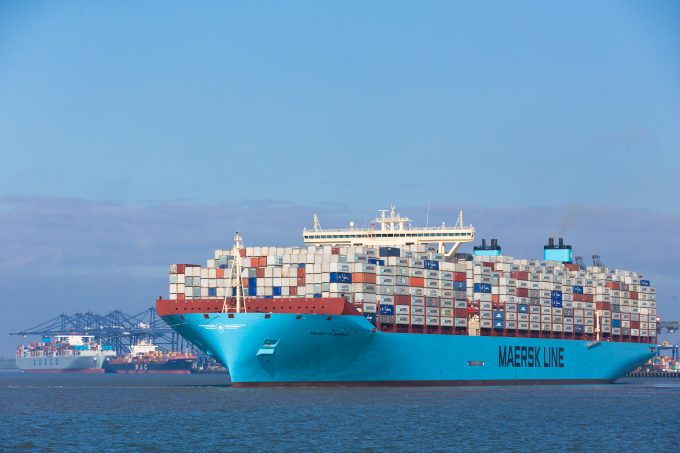A record year for box ship orders, as greener-shipping rules loom
More new containerships have been commissioned from shipyards this week, with orders this year set ...
ATSG: UPDATEMAERSK: QUIET DAY DHL: ROBOTICSCHRW: ONE CENT CLUB UPDATECAT: RISING TRADEEXPD: TRUMP TRADE LOSER LINE: PUNISHEDMAERSK: RELIEF XPO: TRUMP TRADE WINNERCHRW: NO JOYUPS: STEADY YIELDXPO: BUILDING BLOCKSHLAG: BIG ORDERLINE: REACTIONLINE: EXPENSES AND OPERATING LEVERAGELINE: PIPELINE OF DEALS
ATSG: UPDATEMAERSK: QUIET DAY DHL: ROBOTICSCHRW: ONE CENT CLUB UPDATECAT: RISING TRADEEXPD: TRUMP TRADE LOSER LINE: PUNISHEDMAERSK: RELIEF XPO: TRUMP TRADE WINNERCHRW: NO JOYUPS: STEADY YIELDXPO: BUILDING BLOCKSHLAG: BIG ORDERLINE: REACTIONLINE: EXPENSES AND OPERATING LEVERAGELINE: PIPELINE OF DEALS

If losses continue and ocean carriers persist in focusing only on reducing costs rather than improving revenue per teu, the container liner industry “could get very ugly” in the second half of the year, said Drewry today.
Most carriers operated in the red in the final quarter of 2015, despite achieving satisfactory vessel load factors, as average freight rates per container declined dramatically.
And since then, spot container rates have fallen further and contract rates suffered the same fate, putting container line earnings under severe pressure.
In the latest Container Forecaster, published by Drewry Maritime Research, Neil Dekker, director of container research, said: “Ocean carriers should be looking at revenue per teu rather than industry load factors.
“In a world where overcapacity is a given on every trade, headhaul load factors of, for example, 85% need not be considered a disaster by any means.”
Moreover, with 2.6m teu of newbuild capacity due to hit the water by the end of 2017, this kind of load factor, or even lower, is the new reality, suggested Mr Dekker, advising carriers to “get used to it”.
He added that having focused on costs for so long, it was now “vital that carriers turn themselves to the revenue side of the equation”, given that they are no longer able to reduce costs at the same pace as declining global freight rates – not least because the advantages of lower fuel prices have already been cashed in.
According to Drewry data, in the past year alone, the average size of vessels deployed between Asia and North Europe has jumped from 12,000 teu to 14,000 teu, indicating that ocean carriers continue to believe that lowering slot costs is all that is needed to ensure profitability.
However, Drewry said carriers were clinging to a “vain belief” that the lower slot costs of 14,000 teu and 18,000 teu ships would guarantee them success. Its recent research shows that economies of scale “are much reduced after vessels of this size are deployed”.
And shipowners being asked to bail out Hyundai Merchant Marine (HMM), by drastically cutting daily hire rates on long-term chartered ships, is a “sign of the times”, added Drewry, of an industry driven by cost reduction policies.
However, there is growing evidence that ocean carriers are already heeding Drewry’s advice. Both Maersk Line and Hapag-Lloyd recently announced plans to concentrate more on higher-paying niche container business, with the latter specifically building“improvement of revenue quality” into its strategic corporate plan.
Comment on this article